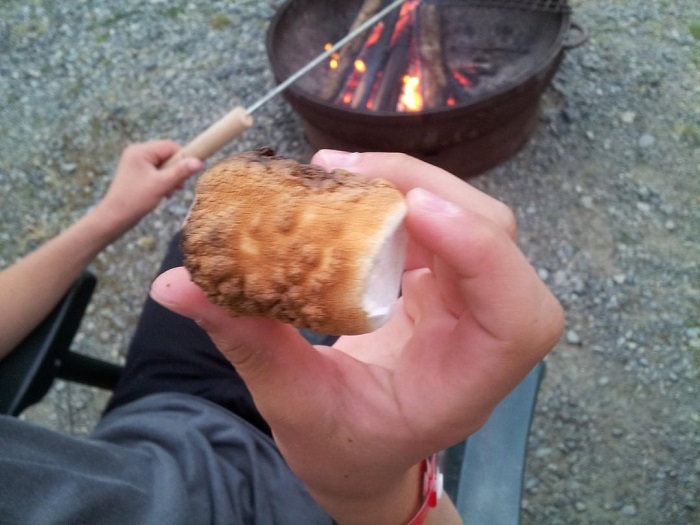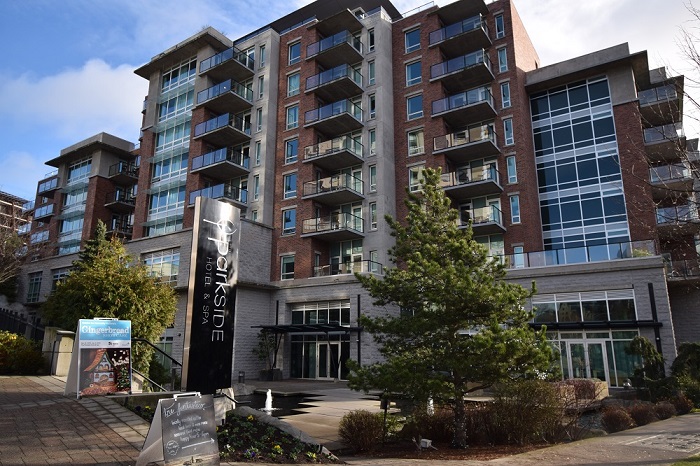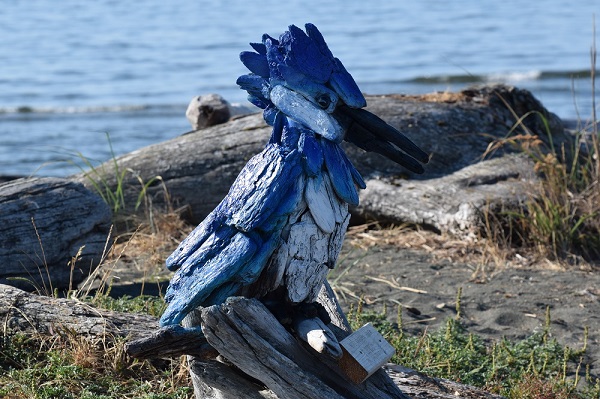Essential Camping Checklist
With tips to make your life easier
You may have a camping checklist in your head, but it is impossible to remember everything when you’re rushing around getting ready to go. Our handy camping checklist is available as a PDF when you sign up for our newsletter so you never have to leave it to memory again!
This article may contain an affiliate link. This means that if you follow a link in this post and make a purchase, I may make a commission, at no extra cost to you. I am not sponsored by any of the products I link to, they are just the items I personally use and would recommend. Your support helps make this site possible – thank you!
Handy Tips Before You Go
- Wash and cut veggies; store in Ziplock bags – use a paper towel to absorb moisture and keep foods fresher, longer
- Hard-boil eggs to eat as is or for egg salad sandwiches
- Prepare foods like chili, taco meat, spaghetti sauce – even French toast - in advance and freeze
- Freeze milk and let thaw in the cooler
- Fill emptied and cleaned milk jugs with water and freeze (will last longer than ice and you can use the water for hand or dish washing when it thaws) *New hack - I now started filling those square plastic tubs that mixed nuts come in (Costco) and it is so much more manageable than the milk jugs. UPDATE: Costco no longer sells nuts in plastic tubs but grated cheese tubs work well too.
- If you don't have room in your freezer to make your own ice (as above), consider buying ice blocks instead of cubes for longer lasting chill (usually available in the same cooler where you get cubes)
Camping Checklist
This camping checklist is pretty extensive but don’t get overwhelmed thinking you need it all. You may not. Take time to go through the list and decide for yourself whether it is worth taking or not (and whether you even have room!). We’ve also included a few helpful tips to help keep your camping experience fun and stress free. Enjoy the wild!
Sleep & Shelter
- Tent with stakes TIP: Bring a mallet or hammer to help get the stakes into the ground (we use one like this)
- TIP: Place glow bracelets or cheap solar lights at each of the stakes to avoid tripping in the dark
- Tent groundsheet (sometimes referred to the tent footprint)
- Tarp (the bigger the better!) and cord to hang it with (16x20 size usually available at Costco)
- Sleeping pads, air mattresses or camp cots (I can't say enough good things about my thermarest - its self inflating with a layer of foam)
- Air pump
- Sleeping bags (personally I prefer to bring sheets and a down duvet)
- Pillows
- TIP: hang a glow stick inside the tent as a nightlight
Around the Camp
- 3 pop-up laundry hampers – use one for dirty clothes, one for garbage and one for recycling. Line with a garbage bag and hold in place with clothespins
- A bin with a lid for shoes outside the tent to keep the inside dry and clean
- Blankets to wrap up in when sitting around the fire
- Cord to use as a clothesline
- Clothespins
- Extension cord and power bar
- Foam floor squares (this is a bit of luxury item but if you already have them, use them in the tent – especially welcomed if sleeping on rough terrain)
- Folding chairs
- Hanging lantern for inside the tent (we use one like this - hangs inside the tent or works well on a table)
- Head lamps are preferable to flashlights – keep your hands free to hold things, carry stuff, find things, build things, etc. (the ones linked above are rechargeable which is handy)
- A pail with a lid makes a good makeshift toilet that can be emptied in the morning – especially with little ones or anybody who doesn’t want to go to the bathroom in the middle of the night
- Portable table unless going to a destination where picnic tables are provided
- Roasting sticks
- Scissors and rope - you will find so many uses for them!
- Solar string lights
- Table lantern (this style will do double-duty for your tent light also)
- Tablecloth (be sure to bring clamps to hold it in place)
- Whisk/broom/dust pan for cleaning out the tent
Get this handy camping checklist as a free downloadable PDF when you sign up for our newsletter.
Camping Checklist - Food and Preparation
- Enough food for all meals while you are camping
- Lots of snacks – everyone is always hungrier when they’re outside all day!
- Aluminum foil
- Axe or hatchet
- Bear-resistant food containers – if you’re heading into bear country there may be containers available for your use. Be sure to review the Province of BC Staying Safe in Bear Country before you go.
- Biodegradable dish soap
- Bowls
- Camp stove and fuel (we bought a butane stove this year that is working well for us)
- Can opener
- Cooking utensils
- Cooler with ice TIP: If your cooler doesn’t have a tray, use command hooks and a plastic basket to keep foods dry and out of the water. A baking rack in the bottom of your cooler will help elevate items out of the water too.
- Corkscrew and bottle opener (and wine and beer of course!)
- Cups
- Cutlery
- Cutting board
- Dish basins – these are so versatile and cheap (think dollar store) that we recommend you bring several and label each with a permanent marker. Use one for washing dishes, one for a rinse basin, one for clean dishes, one for food preparation, one for a foot wash before going in the tent, one for the dog’s stuff, you get the point!
- Dish cloths and dish towels
- Firewood (check before you go for specific regulations; your particular destination may not permit you to bring your own)
- Food storage containers with lids (be sure to choose ones with secure lids like these locking ones)
- Garbage bags
- Knife with a sheath (I bought a new one this summer and I really like how secure it feels in the sheath and I'm not worried about stabbing myself)
- Marshmallows/smores ingredients
- Matches and fire starters
- Mugs
- Plastic storage bags (be sure to bring some bear proof bags)
- Plates
- Pot grabber/oven mitts
- Pots and pans
- Water jug and filter/treatment – it is very important to know the water situation before you go. Some backcountry sites have no potable water so you may need to bring jugs/cases of drinking water. My son uses this one from MSR and finds it simple to use and not bulky to carry.
Camping Checklist - Outdoor Basics
- After bite cream
- After sun moisturizer/cooling gel
- Bear safety gear – the Province of BC recommends you carry bear spray and know how to use it
- Bicycles
- Binoculars
- Books/magazines
- Bug spray
- Cards, puzzles and games
- Daypack
- Extra batteries
- First aid kit – review the contents of a first aid kit here
- Frisbee
- Gravol
- Headlamp (ideal) or flashlight
- If you have little ones, consider a large Rubbermaid tote that doubles as a pool/bathtub
- Map (we highly recommend a Backroads Mapbook so you can explore the region)
- Multi-tool
- Paper, colouring, art supplies
- Sunglasses
- Sunhat
- Sunscreen
- Tylenol
- Water bottle for each member of the family
- Water sports gear (kayaks, inflatable boats, inner tubes, paddle boards, boogie boards, water guns) and personal flotation devices (PFDs) for all ages
Get this handy camping checklist as a free downloadable PDF when you sign up for our newsletter.
Camping Checklist - Clothes and Shoes
The clothing you bring is dependent on the time of year, where you are going and the activities you plan to enjoy. Bring clothes made of quick-drying, moisture-wicking materials. Try to avoid cotton as it does not dry quickly. For each member of the family be sure to bring:
- Bathing suit
- Cozy layers to sleep in (fuzzy or wool socks are especially welcomed)
- Fleece jacket
- Gloves
- Pants
- Rain jacket
- Rain pants
- Sandals/slides
- Shorts
- Socks (more than you think and at least one pair of wool or wool blend)
- Sweater (fleece sweaters are especially nice on cooler evenings)
- Tops (short and long sleeved) - we especially like these tops for their UV protection and quick drying
- Toque
- Undergarments
- Water shoes
- Waterproof shoes or boots
Camping Checklist - Personal Stuff
- Beach towels
- Diapers
- Disinfectant wipes/baby wipes
- Earplugs
- Essential toiletries
- Eye glasses/extra set of contacts
- Hair ties/headband
- Hand sanitizer
- Hand soap
- Medications
- Phone and charger (if going into backcountry, ensure you have appropriate communication devices)
- Toilet paper
- Toothbrush
- Toothpaste (keep this and anything with a scent in your bear-proof food bags) Many BC campgrounds will provide some type of bear-proof container for all campers to use.
Camping Checklist - Pets
- Pet food and treats
- Food and water bowls
- Toys
- Medication
- Pet emergency kit
- Biodegradable poop bags
- Leash
We intentionally left personal electronics off our camping checklist but if it works for your family, then be sure to download movies before you go and bring batteries/chargers/powerpacks.
Always be prepared. Keep this handy camping checklist with your gear so you can find it for your next adventure. Sign up for our newsletter and download the free PDF.
Have fun!
Della
Recent Articles
-
Vancouver Island Wildlife Viewing Times and Locations
Sep 16, 24 06:42 PM
Discover the best times and places to see wildlife in their natural habitat with our Vancouver Island Wildlife Viewing guide. -
Private Campgrounds on Vancouver Island
Aug 13, 24 05:23 PM
Your one-stop listing of all private campgrounds on Vancouver Island. -
Where to Stay in Victoria, BC: A Comprehensive Guide
Jul 10, 24 12:42 PM
Choosing the right place to stay can significantly enhance your experience. This guide provides tips and ideas to help you decide where to stay in Victoria.




